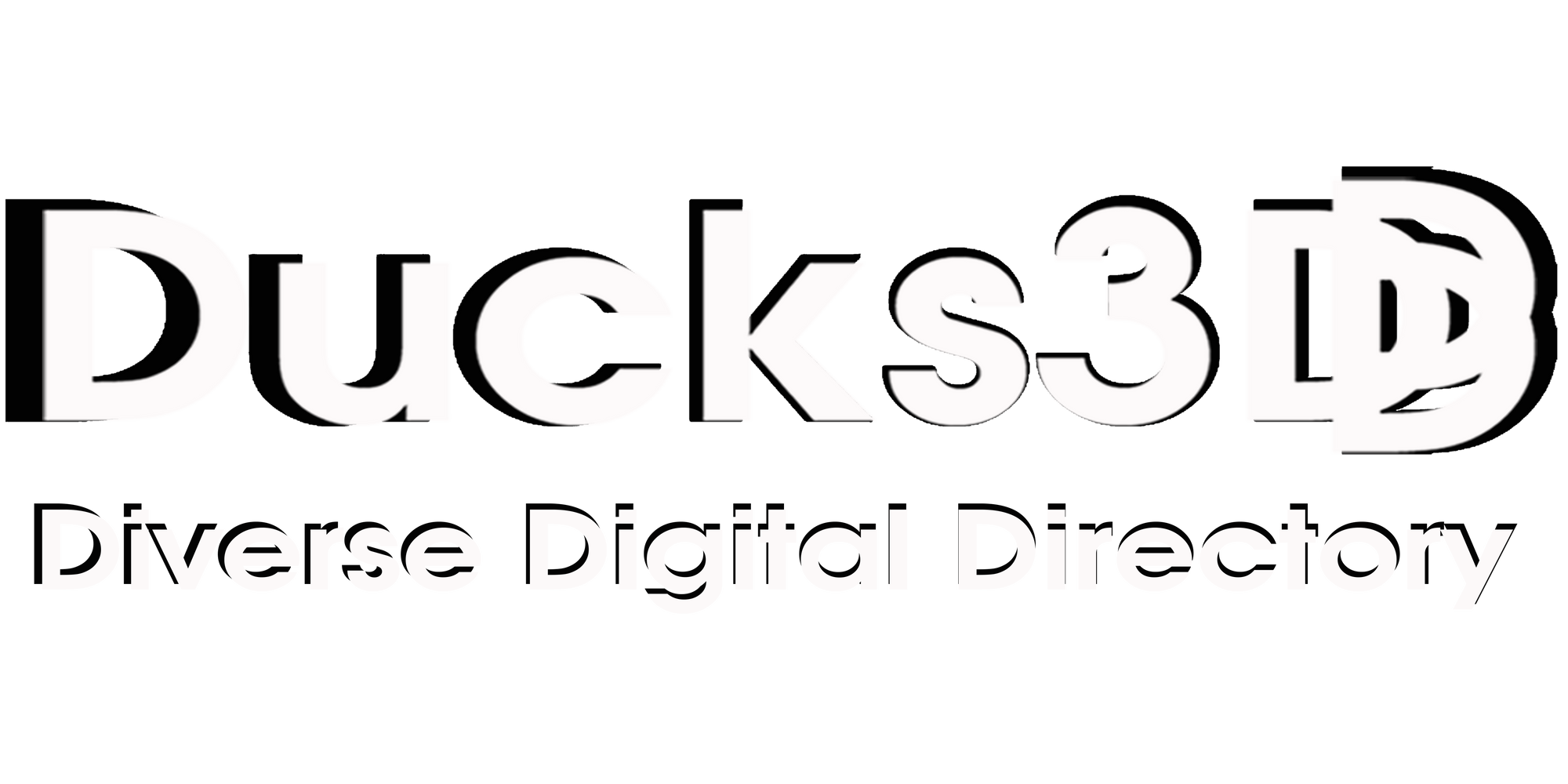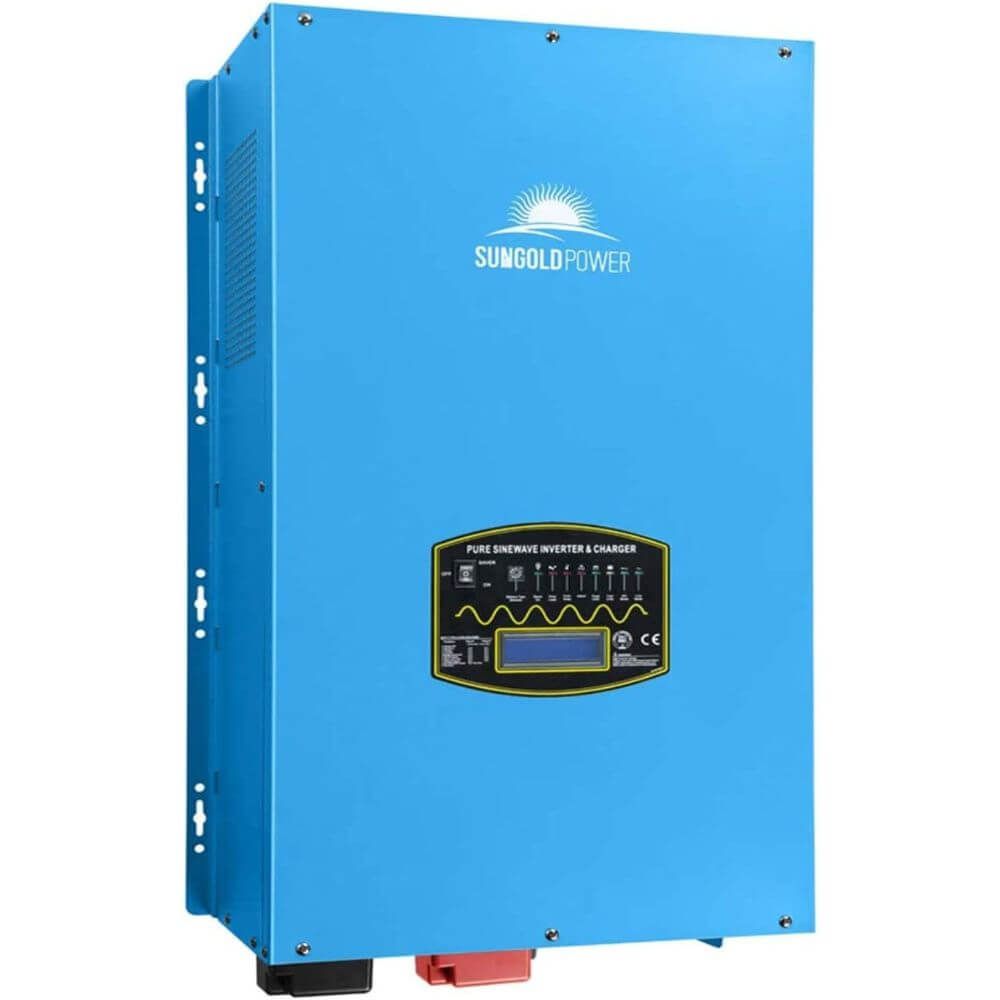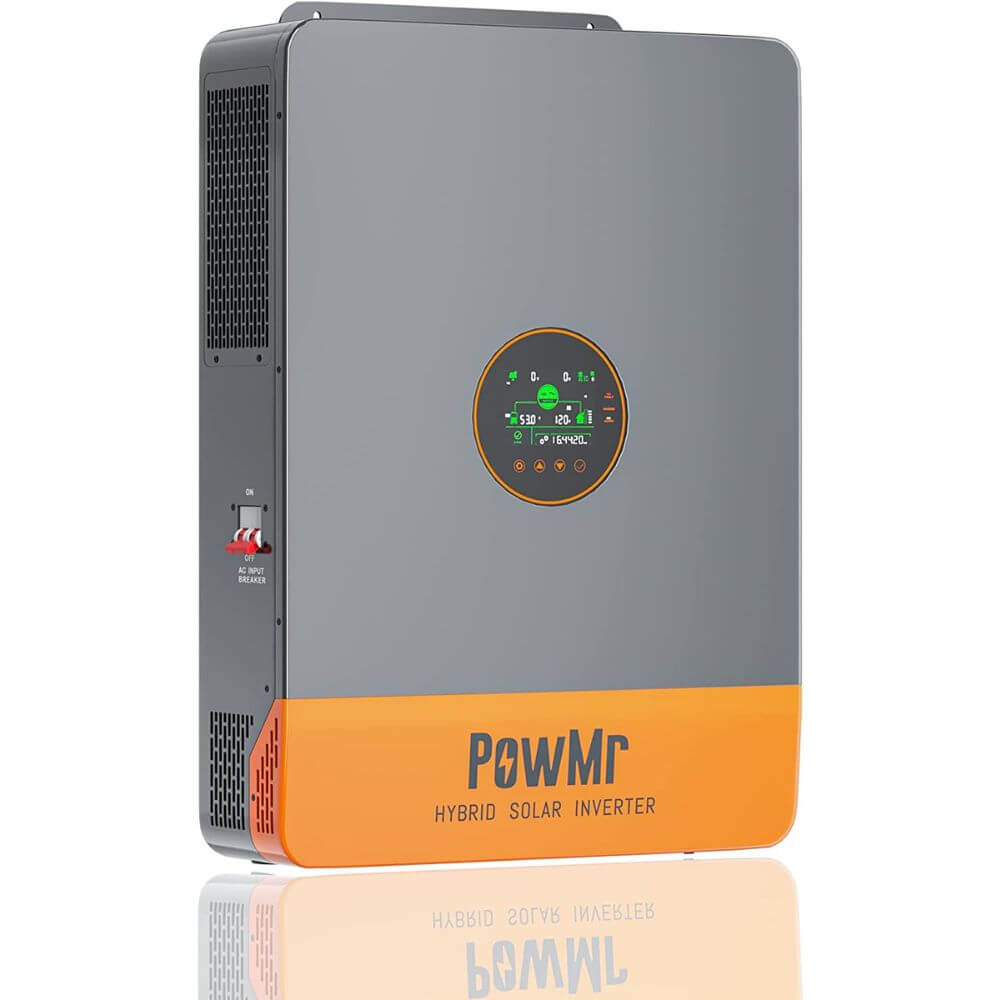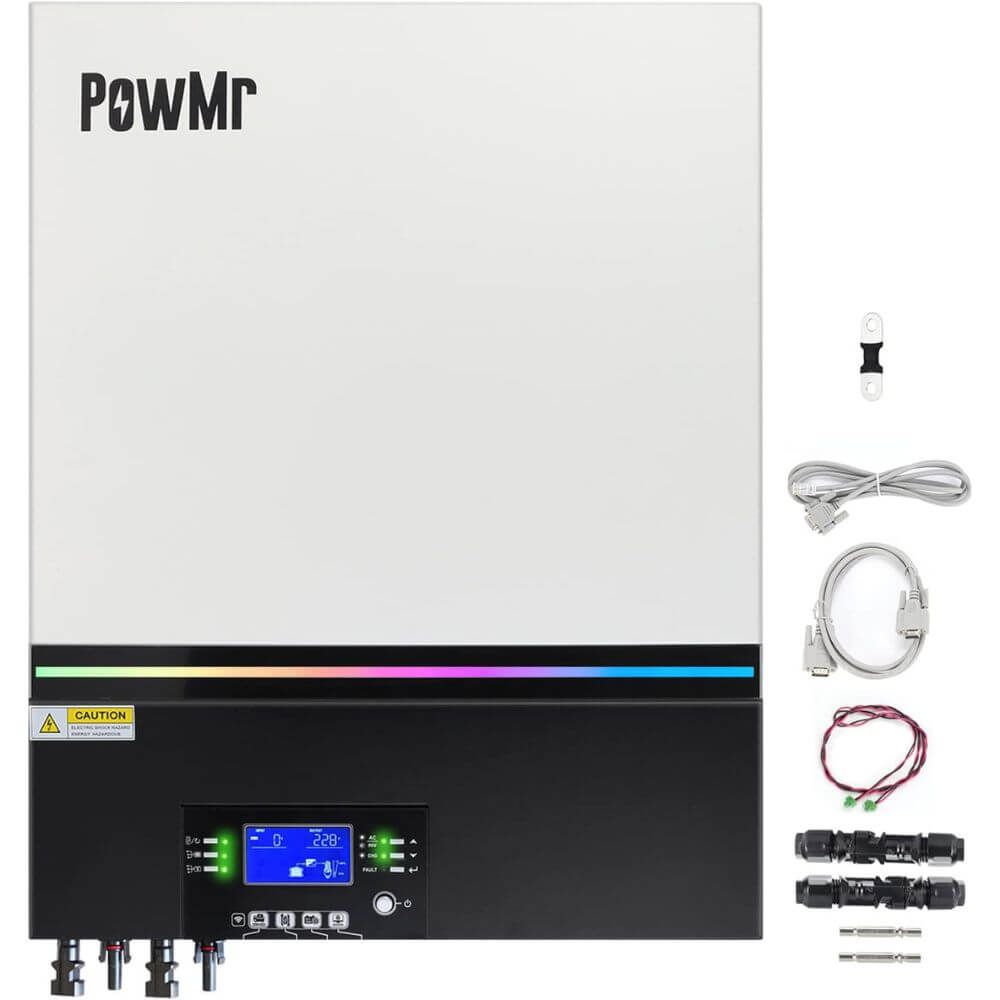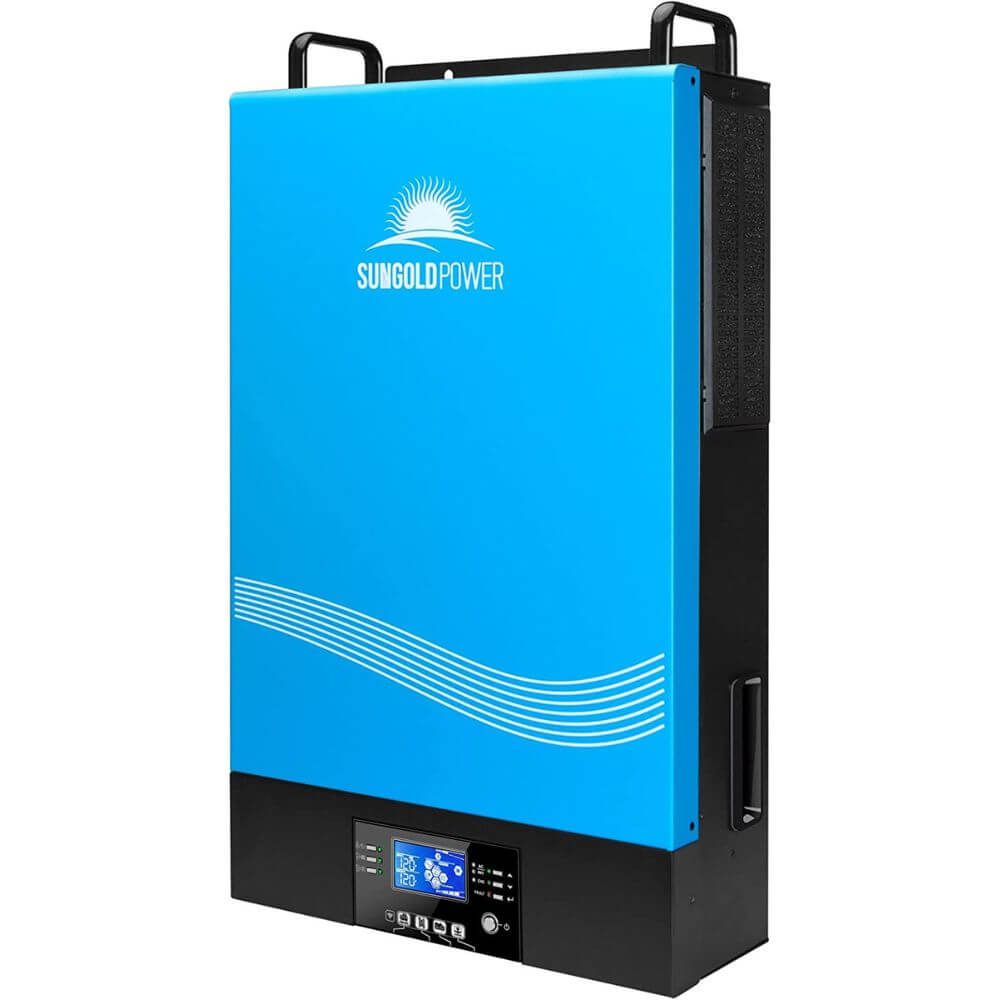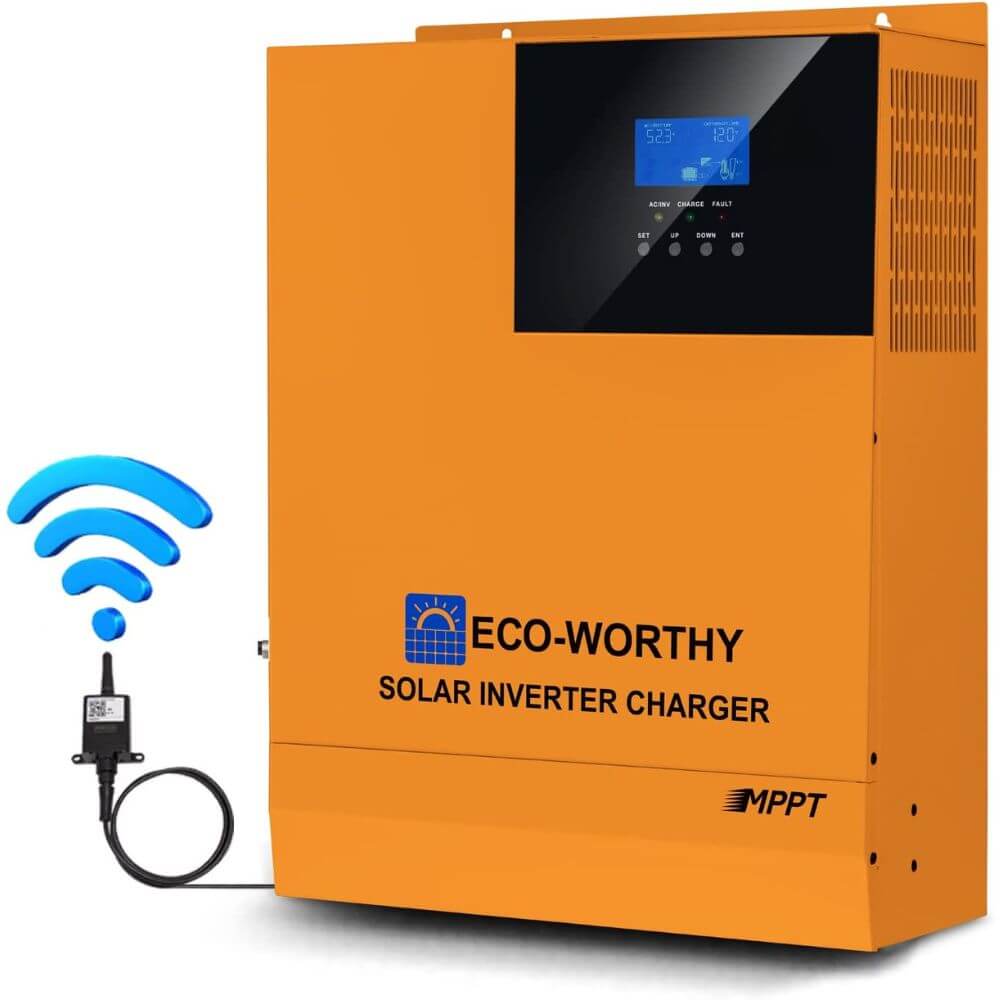Comparing the Different Types of Hybrid Inverters Available Today
With the increasing demand for renewable energy sources, hybrid inverters are becoming increasingly popular with off grid solar systems.
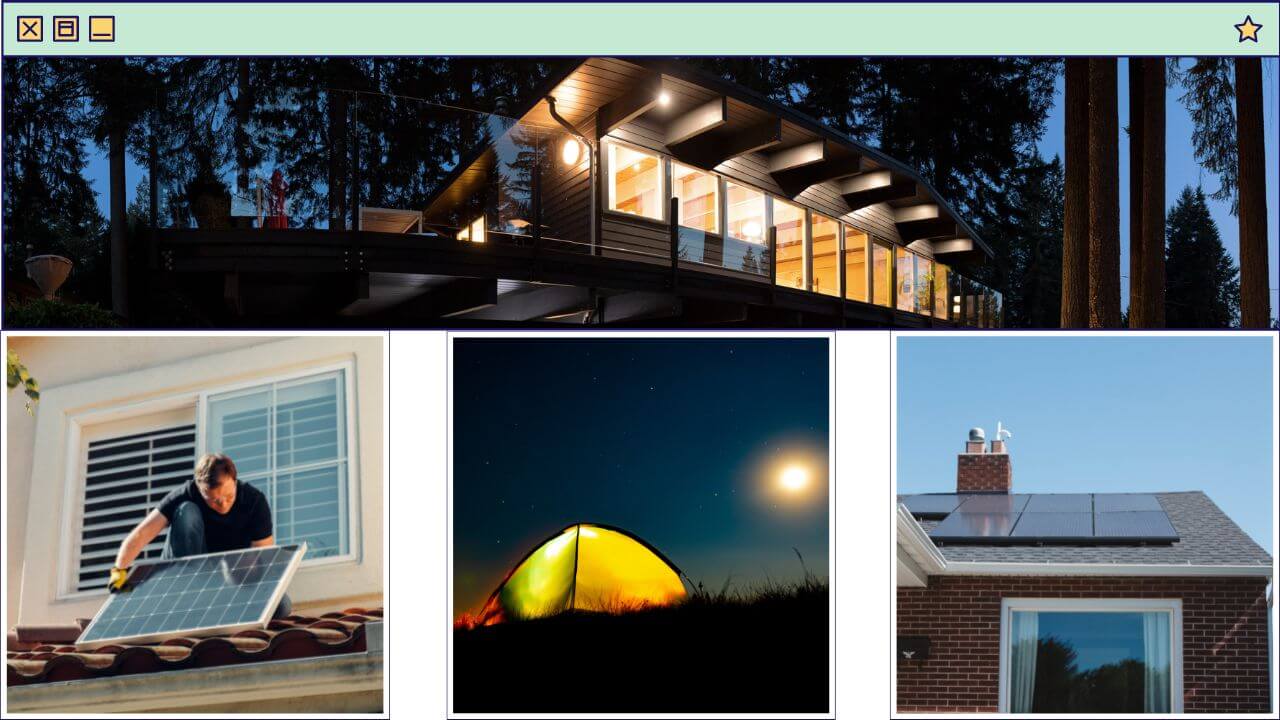
With the increasing demand for renewable energy sources, hybrid inverters are becoming increasingly popular with off grid solar systems. Hybrid inverters are used in the solar power system and battery storage systems to provide reliable energy storage and backup power during power outages. As such, they are an integral part of any green home or business.
When it comes to choosing a hybrid inverter, there is a lot to consider. Comparing the different types of hybrid inverters is no easy task, as there is a range of models with various features and benefits that should be taken into account. In this blog post, we will discuss the different types of hybrid inverters available on the market today, so that you can make an informed decision when purchasing one for your renewable solar system.
The most common type of hybrid inverter is the single phase model, which is ideal for residential applications with lower energy requirements such as small homes or businesses with limited energy needs. These single phase models typically have built-in generators and safety features designed to prevent overloads or surges from damaging equipment. They also often come with input/output terminals for hooking up devices like solar panels or a battery bank. The main advantage of using these models is their affordability and simplicity; however, they may not be powerful enough for larger renewable energy projects or businesses with higher energy demands.
For those considering larger-scale direct current (DC) applications such as powering multiple buildings or powering high voltage appliances like electric vehicles, three phase hybrid inverters are a better option. These three phase models offer increased reliability and safety due to their increased power capabilities and multiple output ports that allow you to connect more devices simultaneously without overloading the system. Additionally, they may include a peak power tracking feature that helps them run more efficiently by automatically adjusting voltages based on changes in load demand throughout the day. The higher initial cost of these three phase systems may be justified by their increased functionality and durability over extended periods of time compared to single phase models.
Finally, hydroelectric hybrids provide an alternative solution for large scale DC applications that require high power levels but don't need peak capacity tracking features or multiple output terminals. Hydroelectric hybrid systems use water pressure generated by turbine blades inside water pipes to generate electricity instead of relying solely on solar panels or batteries for energy production; as such, they require less maintenance than other types of systems since all components are located above ground in easy access locations rather than underground in difficult-to-reach places like basements or crawl spaces. However, these systems tend to be much more costly than either single phase or three phase models due to the complexity involved in constructing them correctly and safely; moreover, they also require regular inspections from professionals due to their increased safety risks associated with moving parts being near sources of water flow such as rivers or oceans.
Eight links have been provided to help you learn about the two types of hybrid inverters most applicable for everyday use. Get a closer look at how these devices work and explore their different features, then decide which one is best suited for your needs!
How we made our choices:
When deciding which hybrid inverter to purchase for our solar power system, we researched different models of solar hybrid inverters available on the market. We considered each inverter’s features and advantages such as input/output terminals for connecting solar panels or batteries, peak power tracking capabilities, safety features, and overall cost compared to other hybrid models. After comparing a variety of inverters from different manufacturers, we concluded that both single phase and three phase hybrid inverters were suitable for our project's requirements. We ultimately chose an inverter model with high efficiency ratings and multiple output ports for connection to multiple devices simultaneously - ensuring that our renewable solar energy system could meet all of its energy needs while staying within our budget. Additionally, we chose a hybrid inverter with advanced safety features and peak power tracking capability to ensure reliable performance over extended periods of time.
Making the right choice when selecting inverters is an important part of any solar energy project, so it's worth taking the time to research and compare models before investing in one. Consider your energy needs, safety requirements, and overall cost before committing to a hybrid inverter model - it'll be worth the effort once you have your renewable solar energy system up and running!
Introducing SUNGOLDPOWER 18000W 48V Solar Hybrid Inverter
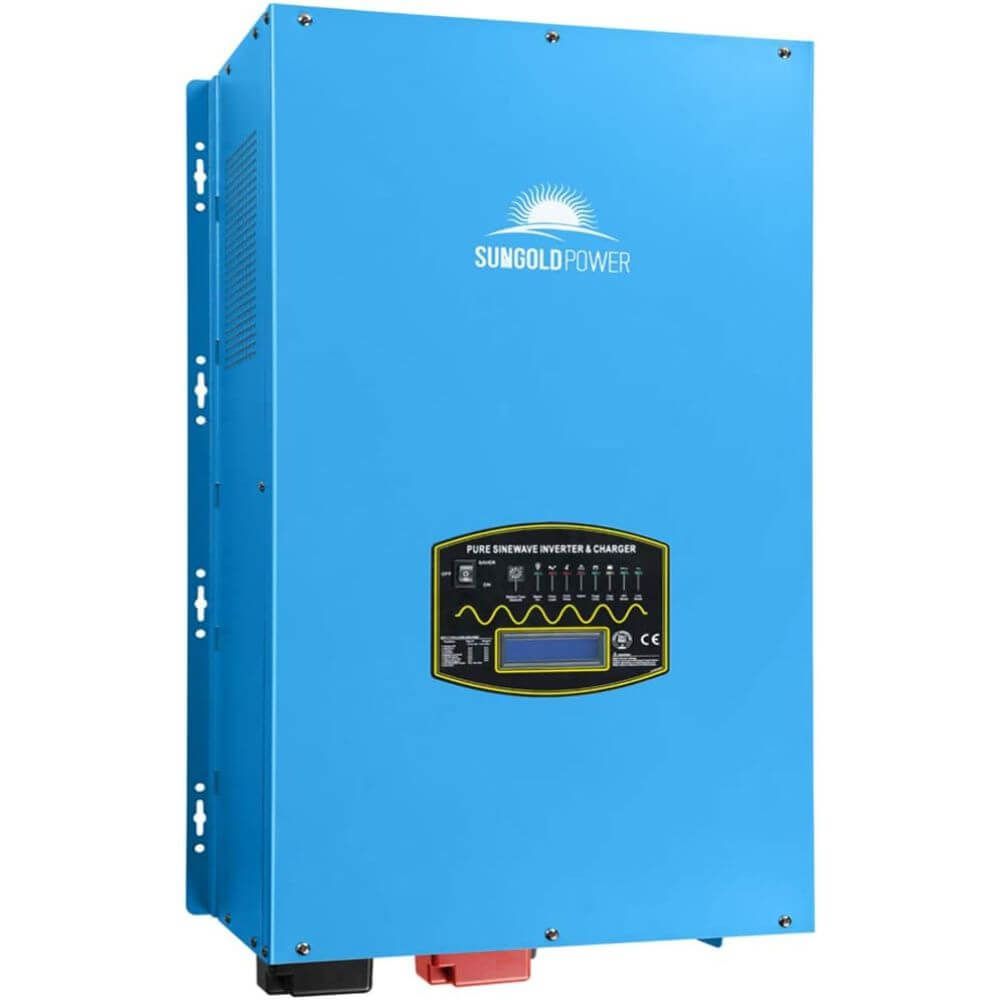
The ultimate all-in-one solution for off-grid power.
SUNGOLDPOWER 18000W
The ultimate all-in-one solution for off-grid power. With 18,000 watts of solar inverter charger peak 54,000 watts for 20 seconds, and an input DC 48 volt and AC 240 Volt, this device offers unbeatable efficiency when it comes to producing clean energy from the sun.
This inverter provides a reliable 120/240 V split phase pure sine wave output and boasts a host of easy-to-use features, including adjustable charge current, DIP switch to set utility/battery priority/ low voltage cut off, and automatic transfer switch between AC sources and battery sources via convenient remote control. Further facilitating smooth operation is its compatibility with AGM, gel, lead acid, lithium ion and LiFePO4 batteries. With its diverse collection of functionalities and wide range of battery types supported by multi-stage charging technologies that allow depleted batteries to start up gracefully, this properly balanced hybrid arrangement ensures maximum efficiency across all electronic gadgets in your home or business setting. Make SUNGOLDPOWER 18000W 48V Solar Hybrid Inverter your smart choice for reliable off-grid power!
SUNGOLDPOWER 12000W 48V Solar Hybrid Inverter
The SUNGOLDPOWER 12000W 48V Solar Hybrid Inverter offers the flexibility to suit a variety of home and small business needs. This all-in-one inverter gives you a 12,000 watt solar inverter charger peak of up to 36,000 watts for twenty seconds. With an input DC 48 volt, the AC output is 240 Volt split phase pure sine wave. Plus, this powerful system comes with its own transfer switch and 80 Amp MPPT battery charger.
You can adjust the charge current from 0 to 100%, using its convenient DIP switch to set your utility/battery priority as well as low voltage cutoff. An Automatic Generator Start (AGS) feature also allows for an automatic transfer between AC sources and battery sources whenever necessary.
The SUNGOLDPOWER 12000W 48V Solar Hybrid Inverter also provides various safety features including low/high voltage protection, overload protection and over temperature protection – all backed by a one year warranty!
It is reliable enough for powering appliances like microwaves or water pumps, making it perfect for home users as well as small businesses in RV’s or boats. The remote control operation offers additional convenience. Don’t miss out on the reliability that the SUNGOLDPOWER 12000W 48V Solar Hybrid Inverter can provide you today!
DIANXIAOMI UL1741 12KW 48V Solar Hybrid Inverter
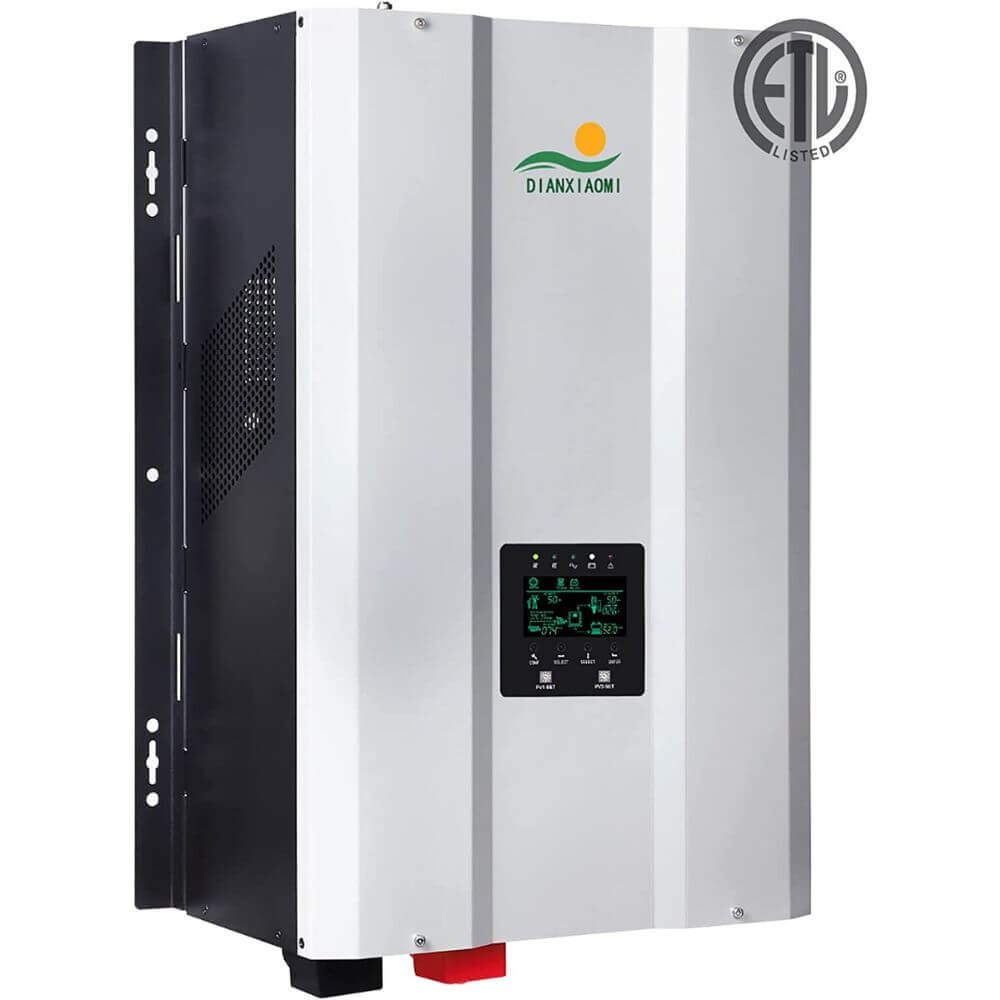
Solar charger and auto-transfer switch in one complete system.
DIANXIAOMI UL1741 12000W
The DIANXIAOMI UL1741 12KW 48V Solar Hybrid Inverter is the perfect combination of an inverter, AC charger, MPPT solar charger and auto-transfer switch in one complete system. This unit offers 12000 watts of continuous draw power and 36000 watts of surge to give you peace of mind during those pesky power outages. With its ETL certification to UL 1741 standards, you can rest assured that your investment is reliable and cost-effective. Beyond that, enjoy the added convenience of a split phase AC output with 12kW watt low frequency power inverter with transformer and 36kW peak. If you're a homeowner or small business owner looking for a dependable energy source option, look no further than the DIANXIAOMI UL1741 12KW 48V Solar Hybrid Inverter!
PowMr 10000W Single Split Phase Solar Hybrid Inverter
The PowMr 10000W Single Split Phase Solar Hybrid Inverter, a superior solar energy storage solution for both home and small business owners alike. This inverter is a true all-in-one package with its single-phase and split-phase functions, meaning it can not only easily power a variety of devices but also provides double the amount of power whenever required.
The advanced control algorithm used in this product is simple yet effective resulting in an inverter that offers high response speed, reliability and industry standard performance. With 14 smart protection functions, it’s difficult to find anything more comprehensive on the market right now so rest assured your devices are protected! Its maximum PV array power is 11000w while its max peak power reaches 20kW – no wonder why the PowMr 10000W Single Split Phase Solar Hybrid Inverter is one of best solar storage solutions available.
What's more - this superior inverter comes at an unbeatable price that won’t dent your wallet either! With adjustable rated output of 120V/240V, why not make the switch to something better today?
8000W Solar Inverter 48V Hybrid Inverter Off Grid
The new 8000W Solar Inverter 48V Hybrid Inverter Off Grid—the perfect choice for your home or small business needs. With an advanced pure sine wave inverter and 80A MPPT controller built-in, you won’t have to worry about electromagnetic pollution or a shortened appliance life. This inverter is designed with your needs in mind; it offers an output of 8000W continuous (surge 16000W), single-phase 220Vac output, and a max input PV of 8000W. You can even operate up to 6 units in parallel for additional convenience.
In addition to its practical features, the 8000W Solar Inverter also includes a very detail LCD display screen and customizable status LED bar with RGB lights. On the LCD screen you can easily check voltage, current, system status, remaining battery -- all important information for monitoring performance and making sure your system is working as it should. The customizable status LED bar includes six buttons allowing you to personalize your system parameters -- plus vivid RGB light that will display different colors based on whether solar power or grideneration is being used!
If you need a reliable hybrid inverter that won’t let you down, turn to the 8000W Solar Inverter 48V Hybrid Inverter Off Grid today! Thanks to its awesome features and powerful technology, this inverter will make sure your home or business's systems are always running smoothly and efficiently.
SUNGOLDPOWER 6000W 48Vdc Hybrid Solar Inverter
Are you looking for a reliable and efficient solar inverter? Look no further than the SUNGOLDPOWER 6000W 48Vdc Hybrid Solar Inverter! This high-end device offers a multitude of features to ensure smooth and efficient energy conversion from solar power to usable electricity. The Parallel Kit allows up to nine units (54KW Max) to be connected, with 120V/240V split phase output without needing to parallel. Furthermore, there is an in-built WIFI transmitter allowing you easy monitoring on your iPhones and Androids. Additionally, owners can use it without batteries connected (single unit support). It also supports BMS (RS485, CAN-BUS, RS232) communication ports for Pylontech, Soltaro and Weco battery systems. You can even enable Grid Injection to feed excess PV power generation to the electricity grid, though be sure to check with local authority before applying this feature. All these features make the SUNGOLDPOWER 6000W 48Vdc Hybrid Solar Inverter an ideal choice for both home owners and small business owners alike. So why wait? Get your hands on this top-of-the-line product today for unprecedented quietness efficiency!
6000W 48v Hybrid Solar Inverter
This 6000W 48V Hybrid Solar Inverter is perfect for home and small business owners looking to stay off grid. With a built-in MPPT solar charge controller of 100A, this inverter is compatible with Lead-Acid, AGM, Gel, Flooded, and Lithium batteries. It's capable of accepting up to 6KW of solar power input, with a maximum voltage of 150Vdc and a max solar charging power of 5600W. Its output at 120V/240V±5% is impressive and its AC charging current can reach up to 35A.
Not only that but you have five mode options when it comes to this inverter. You can choose from AC Input Priority; Battery Prioritye; ECO Mode; Generator Mode; and Unattended Mode depending on your needs. With its super large transformer, you can run an array of inductive appliances such as air conditioners water pumps and compressors without any hitch over long periods of time. Finally, when the battery power supply becomes insufficient, the machine automatically switches into Unattended Mode to preserve the energy in its reserves.
All in all, investing in a 6000W 48V Hybrid Solar Inverter could be one of your best decisions yet! This inverter guarantees performance along with reliability for years to come - get yours today!
ECO-WORTHY All-in-one Solar Hybrid Charger Inverter
The ECO-WORTHY All-in-one Solar Hybrid Charger Inverter is an innovative and powerful product designed with everyone in mind. It features advanced MPPT technology with a 99.9% efficiency rating, offering full digital voltage and current, double closed loop control with advanced SPWM technology that produces pure sine wave output. This reliable solar charger inverter also has multiple modes: two output modes – mains bypass and inverter output – plus four battery charging modes (only Solar, Mains Priority, Solar Priority, or Mains & Solar hybrid charging). It is equipped with a LCD screen for dynamic display of system data and operation status, along with three LED indicators to keep you up to date on the information you need. Additionally, it comes complete with power generation saving mode to minimize no-load loss and an intelligent variable speed fan to provide efficient heat dissipation while extending its life. Not only this but it even supports multiple batteries too - lithium battery activation by PV solar or mains; as well as access of lead-acid and lithium batteries. The ECO-WORTHY All-in-one Solar Hybrid Charger Inverter will provide reliable and uninterrupted power supply for both home owners and small business owners alike - creating endless possibilities for any application.
FAQs
What is the difference between an inverter and a hybrid inverter?
Have you ever heard of the saying, "two peas in a pod?" Well, that definitely applies to inverters and hybrid inverters. On the surface, they may look pretty similar - but would you be surprised if I told you there are actually some key differences between them?
Well, let's start by defining what an inverter is. Generally speaking, an inverter is a device that converts direct current (DC) power from solar panels into alternating current (AC) power. To put it simply: an inverter helps turn your solar energy into electricity that can be used in your home or office.
On the other hand, a hybrid does much more than just converting DC power to AC power – it can both convert and store energy at once! This type of inverter is usually connected to both solar panels AND a backup battery system (which could be grid-tied). So when there’s no sunlight or when the sun shines less than expected during winter months, you don't have to worry about not having enough stored energy because your hybrid devices will always have some extra juice stored up just in case!
In conclusion: while regular old AC-to-DC conventional style converters only do one job – that is converting AC power into usable DC electricity – Hybrid Inverters come with extra options like backup battery storage systems as well as access to utility grid tie systems which makes them even more efficient at powering up AC systems for residential homes and offices powered by DC solar or battery backup systems.
What are the disadvantages of hybrid inverters?
The biggest disadvantage has to do with their cost.
They are more expensive than traditional inverters, particularly when it comes to the battery backup power they need and the battery inverter that is necessary for optimal solar energy efficiency. The cost of purchasing a hybrid can also be higher due to needing additional components such as a battery storage system, along with the DC electricity conversion process.
Another disadvantage of using a hybrid is that it's not necessarily easy to install or maintain them. This means you may need an expert electrician or engineer to get your system up and running in order to avoid any inconvenience or danger while in use.
In addition, some hybrid systems have difficulty dealing with fluctuating voltage levels as well as poor insulation which may cause them to trip more often than other types of electrical equipment. This increases maintenance costs since these trips have to be manually reset quite often in order for the system to keep working properly.
Finally, there is always risk associated with integrating electrical components onsite if proper safety measures are not taken into account due to their potential risks and complexity when compared with other utility grid tie systems like PV string-inverter based ones. It could potentially lead towards fires or damages caused by electric surges if not done correctly!
All things considered, hybrid inverters still provide great benefits from being able to deploy renewable energy sources such as solar power but only after taking into account all the disadvantages stated above does one truly realize its true value when it comes down to considering about choosing the right type for their residential or commercial needs!
Are hybrid inverters the best option?
Many hybrid inverters are the best option? In a new system, off grid inverters are absolutely the best option in case of a power outage! A hybrid inverter offers a great blend of features that make them the epitome of smart, efficient power consumption.
First and foremost, these inverters are equipped with backup power capabilities. This means that when you have an outage or other issue occurring, you will still be able to access electricity from your battery. Storing electric energy in batteries means you can use renewable sources like solar technology or wind to generate electricity which can then be used in the entire home during times of a grid outage. This is great for those who want to enjoy clean energy while making sure they don't go without power if there's an emergency.
Hybrid solar inverters also utilize DC electricity produced by solar panels which is sent into a solar battery storage before converting it into AC electricity for household use. The availability of this stored DC energy helps reduce your energy costs since it’s being drawn directly from your own renewable source instead of relying on excess electrons coming from the grid tie – ultimately meaning more savings in your pocket while providing green energy to your household as well.
Another benefit is having better control over what kind and how much electric power needs to load cycling & balance throughout its operations within the system . Hybrid Inverters come with sophisticated software packages allowing for custom optimization settings that give users full control over their homes' systems in order to maximize their efficiency based on usage patterns (i.e.: peak hours). In addition, advanced monitoring software allows homeowners/users peace-of-mind knowing exactly how much renewable electric & fossil fuel generated powers are consumed at any given time along with insights into such demand dynamics so changes accordingly can be made if necessary or specified changes can be done easily within certain ranges via the sophisticated programs controlling all operations provided by such devices usually coming at no extra cost depending on brand/model.. Allowing customers better control over both financial and environmental impact resulting from different choices when managing resources efficiently through direct accesses available only with these special hybrids makes them really stand out among others currently offered on market - hence why experts regard these as a clear winning choice nowadays more often than not if considering all options carefully.
What are the disadvantages of hybrid power system?
Hybrid systems are a great way to have both solar energy and energy from the grid, but they definitely come with some drawbacks.
First off, these systems require a lot of setup and maintenance. You need enough space for not only your battery inverters and solar array, but also all the supporting equipment such as power monitoring software. The upfront cost can be expensive as well due to all of this hardware needed to set up the hybrid system.
Second, it’s much harder to monitor how much you’re producing from your solar array since you get more power from your local utility company in addition to what you produce from your solar cells. This means there’s less incentive for people with hybrid systems to install additional equipment like meters or tracking devices because it would be impossible for them to measure how much electricity their own system is producing compared to what they get from their utility company.
Third, even though the idea of a hybrid system may seem simpler than setting up two separate sources of renewable energy, it can actually end up being more complicated in practice. With one source (like an entirely solar-powered home) there are fewer components that need regular upkeep – while with a hybrid system, every piece needs monitoring: batteries must be inspected regularly; safety switches must often be replaced; etc., so maintenance costs go up significantly over time too! Ultimately though if done right it can save money long-term by combining clean energy sources in one effective package!
When should you use hybrid inverters?
When you want to save money, lower your energy bills, and have greater control over your home's electricity production and consumption. A hybrid allows you to utilize self-consumption of electricity generated by solar panels or other renewable energies. It can also gives you the ability to remotely monitor performance of your system through an app on a connected smartphone. With this data in hand, you can more wisely decide when it makes sense for energy stored from the grid versus energy produced from a solar panel system or other renewable sources.
But that doesn't just mean savings — it also means convenience! You don't need any fancy alarms or meters; instead all necessary information about power storage/usage is now conveniently located on your cell phone. And if something goes wrong? No problem. Your phone can be used to troubleshoot any issues that might arise with ease, giving you peace of mind knowing that your energy usage is being monitored efficiently and safely at all times.
In conclusion, a hybrid inverter saves time without sacrificing efficiency and accuracy — it's perfect for those looking for cost-savings as well as convenience in their home energy setup!
Can I run a hybrid inverter without battery?
That depends on how you define "run". If you mean can a hybrid inverter operate without batteries, then the answer is yes and no.
Yes, if you have a photovoltaic (PV) system connected to a grid connection and your energy needs are less than what your PV system produces, the excess electricity will be sent to the grid or used by other appliances in your home. In this case, there would be no need for batteries since they wouldn't store any energy at all.
No, if you want to power an off-grid home with solar power or back up utilities like telephone lines or electrical systems during emergencies. To do this effectively, you'd need some kind of battery storage system that could convert DC electricity into AC electricity when needed. Without batteries attached to your hybrid inverter, it won't function properly as it won't be able to store the necessary amount of energy which is required for running all kinds of electronic equipment and gadgets when there's no access to utility line power supply.
All in all - if all you want is a reliable source of AC/Horsepower from solar panels during daylight hours then yes - one could technically run a hybrid inverter without batteries but if one wants more control over their PV system operation – not just relied on sunshine – then definitely adding properly sized battery storage capacity is imperative!
In conclusion, comparing the different types of hybrid inverters available today requires careful consideration depending on your specific requirements and budget constraints; understanding potential benefits as well as drawbacks can help ensure that you purchase the right model for your individual needs while still staying within your desired budget range.. Regardless of which type you ultimately choose, however, investing in the best hybrid inverter to provide backup power, meaning the one that suits your needs, is always a great way to reduce your reliance on the traditional power grid connection while still enjoying reliable and efficient energy production.
